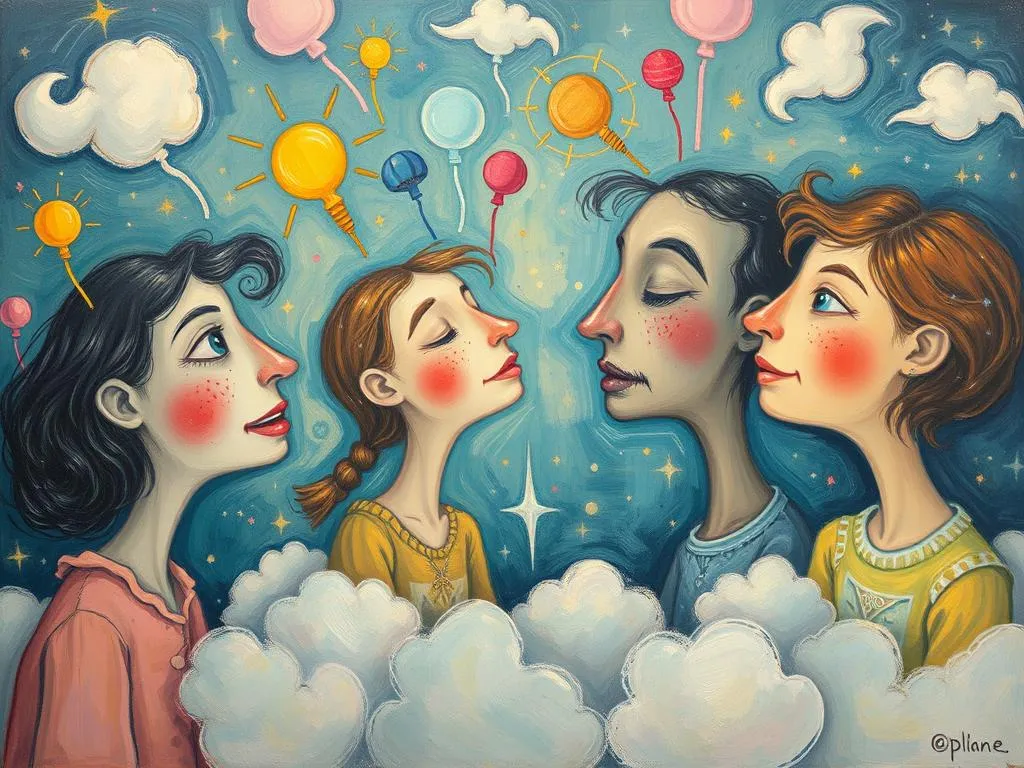
Have you ever woken from a dream, heart racing, only to realize it was filled with people you know—or perhaps even strangers—who seemed to embody your fears, worries, or unresolved conflicts? Dreams can often feel like a chaotic jumble of emotions and imagery, but they hold deeper meanings waiting to be unraveled. When we encounter people with issues in our dreams, they can serve as reflections of our own struggles, projections of our inner worlds, or even messengers from our subconscious.
As you dive into this exploration of dream symbolism, experience analysis, and personal growth, consider how the figures that populate your dreams might be urging you to confront aspects of your waking life. Let’s embark on this journey together, peeling back the layers to discover the wisdom hidden within our nighttime narratives.
Reflective Shadows: The Symbolism of People in Dreams
When people come to life in our dreams, they often symbolize various aspects of ourselves or significant relationships in our waking lives. Dreams are a mirror, revealing the state of our psyche and the dynamics we navigate daily. For instance, if a dream features a friend who is struggling, it might reflect your own feelings of inadequacy or anxiety. Alternatively, this friend could embody qualities you admire or desire to cultivate within yourself.
Cultural perspectives offer rich insights into how we interpret these dream figures. In many Indigenous cultures, dreams are seen as a gateway to the spiritual realm, with people in dreams acting as guides or teachers. For example, encountering a wise elder in your dream may symbolize a call to seek wisdom and guidance in your life. Meanwhile, in some Eastern philosophies, dreaming of someone with unresolved issues could represent karmic ties, suggesting that you may need to address past grievances or unfinished business with that individual.
From a psychological standpoint, Carl Jung posited that people in dreams are often archetypes, representing universal human experiences. For instance, the Shadow archetype might appear as a person who embodies your suppressed fears or desires. By engaging with these dream figures, you can confront these aspects of yourself and begin the process of integration.
Understanding the symbolism of people in dreams can empower you to recognize the emotional undercurrents that influence your waking life. Rather than dismissing these figures as mere figments of your imagination, view them as opportunities for self-reflection and growth.
Dream Dialogues: Scenarios with People and Their Issues
To further illuminate how people with issues can manifest in our dreams, let’s explore some specific scenarios. Each of these dreams carries its own narrative, yet they all share a common thread of exploration and introspection.
Scenario 1: The Disapproving Parent
You find yourself in a dimly lit room with your parent, who is criticizing your life choices. You feel a sense of shame wash over you. In this dream, the parent can symbolize your internalized expectations and feelings of inadequacy. Their disapproval may reflect your own fears of failure, urging you to examine the pressures you place upon yourself.
Scenario 2: The Betraying Friend
In a dream, you discover that a close friend has betrayed you. This emotional turmoil feels incredibly real. This scenario often highlights feelings of trust issues, either within that relationship or in broader social contexts. Consider what this dream might reveal about your fears of abandonment or feelings of vulnerability.
Scenario 3: The Overwhelming Boss
You’re in a meeting with your boss, who is throwing an avalanche of criticism your way. The dream leaves you feeling paralyzed. Here, your boss may represent authority figures in your life or the pressures of societal expectations. This dream could be prompting you to confront workplace challenges or feelings of inadequacy in your professional identity.
Scenario 4: The Lost Loved One
You dream of a deceased loved one who seems distressed and is reaching out for help. This poignant encounter can signify unresolved grief or a desire for connection. It’s a reminder to process your emotions surrounding loss and to seek closure, healing, and understanding.
Scenario 5: The Jealous Rival
You encounter a rival in your dream, who is succeeding while you feel stuck. As you watch them bask in their success, feelings of envy and frustration arise. This scenario often highlights your own self-doubt and aspirations. Reflecting on this dream can help you acknowledge your innate desires for achievement while also motivating you to take actionable steps toward your goals.
These scenarios illustrate how the people we encounter in dreams can provide profound insights into our emotional landscape. Examining the relationships and feelings they evoke can lead to a greater understanding of your waking life challenges.
The Path Forward: Growth Through Dream Encounters
Now that we’ve explored the symbolism and scenarios of people in dreams, let’s consider how these experiences can contribute to your personal growth. Engaging with the figures that appear in your dreams can serve as a catalyst for transformation, leading you to confront your fears, heal emotional wounds, and find clarity in your relationships.
First, practice journaling your dreams. Write down your dreams upon waking, focusing on the people you encountered and the emotions they stirred within you. By capturing these thoughts, you create a valuable resource for reflection and analysis. Over time, you may notice patterns and recurring themes that can illuminate your personal journey.
Second, consider dialoguing with dream figures. You can do this by envisioning a conversation with the people from your dreams. What would you say to that disapproving parent? How would you respond to the jealous rival? This exercise allows you to explore unresolved feelings and gain new perspectives, turning your dreams into a space for healing.
Additionally, seek to integrate the insights you’ve gained from your dreams into your daily life. If a dream reveals feelings of inadequacy, take proactive steps to build your confidence, whether through skill development or seeking support from friends. If trust issues arise, consider communicating openly with those you care about, fostering a deeper connection.
Lastly, practice self-compassion. Understand that dreams often reflect our emotional struggles and that it’s okay to feel vulnerable. Acknowledging your feelings without judgment can pave the way for healing and growth. Embrace the notion that confronting issues—whether from your past or present—is a vital part of the journey toward self-discovery.
In the grand tapestry of life, dreams serve as a profound thread, weaving together our experiences, emotions, and aspirations. The people we encounter within them are not just characters—they are reflections of our inner worlds, prompting us to face our fears and embrace our growth.
Reflecting on your dreams and the people that populate them can lead to transformative insights. As you navigate the complexities of your waking life, remember that these dream encounters are invitations to engage with your deeper self. So, the next time you wake from a dream filled with people and their issues, take a moment to reflect on the messages they carry. They may just hold the keys to unlocking your potential and guiding you toward a brighter path forward.







